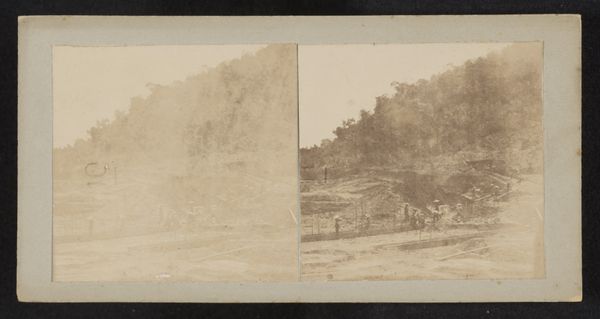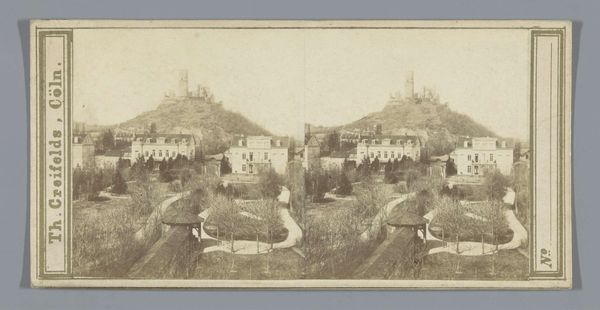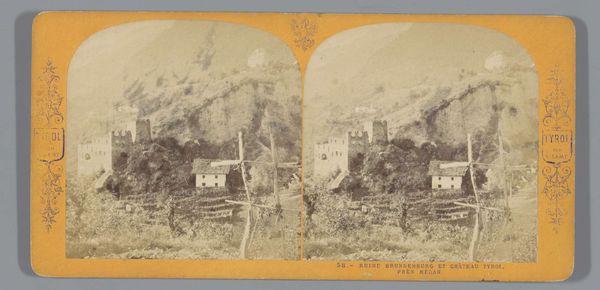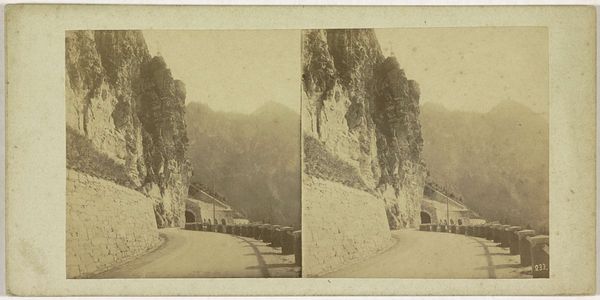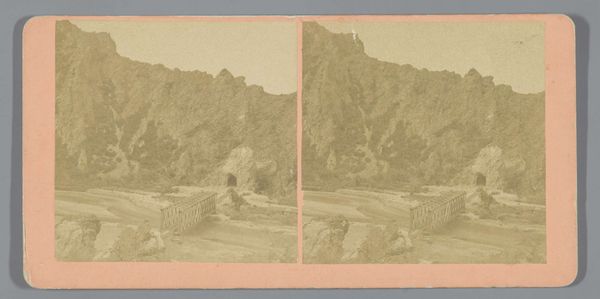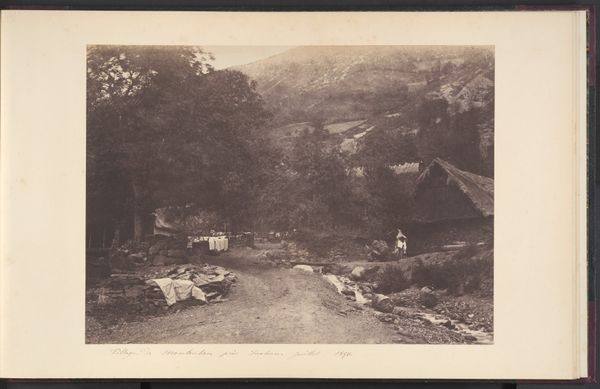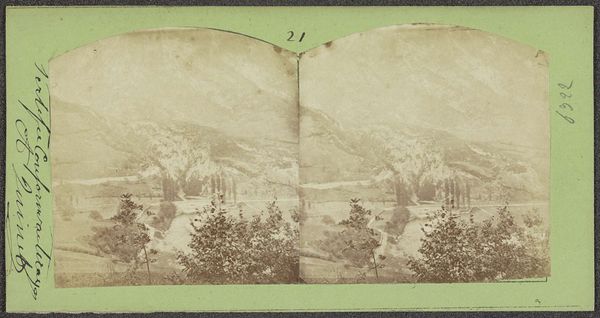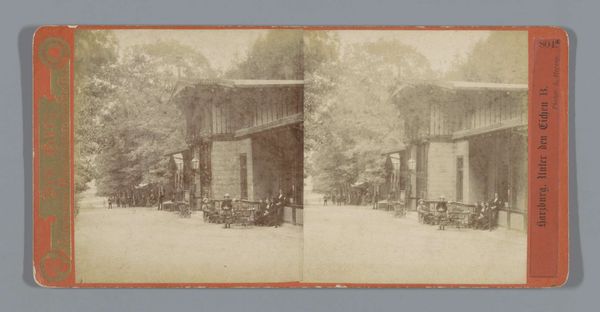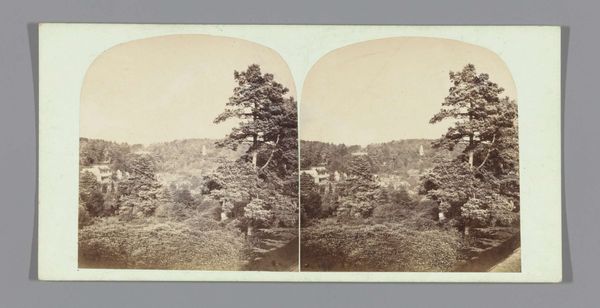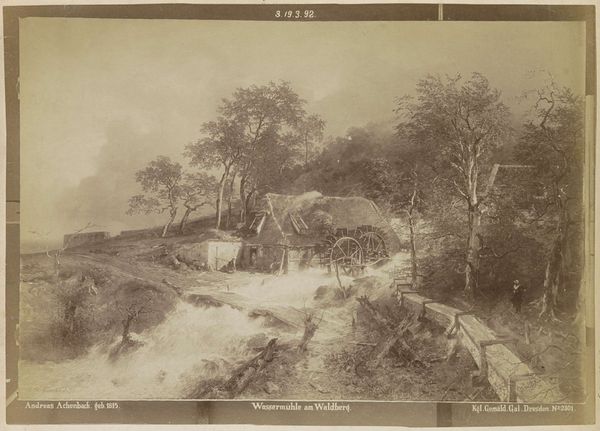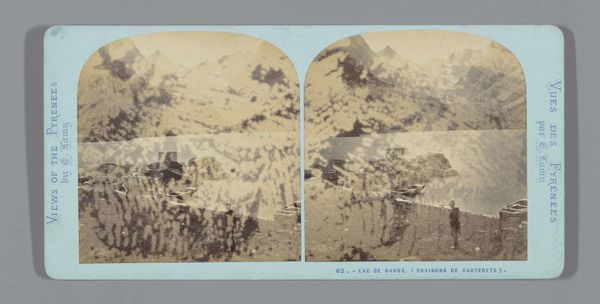
photography
#
landscape
#
street-photography
#
photography
#
street
#
realism
Dimensions: height 84 mm, width 171 mm
Copyright: Rijks Museum: Open Domain
Curator: The work before us is titled "Straat in Cheddar, Engeland," translating to "Street in Cheddar, England," captured between 1854 and 1859 by an unknown photographer. The subdued sepia tones immediately suggest a quaint scene frozen in time. What are your initial thoughts? Editor: It strikes me as remarkably still. The muted palette and the symmetry afforded by the stereoscopic format lend it a serene, almost dreamlike quality. The formidable cliff face looming in the background is especially striking against the smallness of the village. Curator: I'm interested in the materiality of the image itself. Think about the process involved: wet plate collodion, the labor in preparing the chemicals, transporting the equipment… each decision had a tangible effect on the final outcome and quality. Editor: I agree; the medium undoubtedly informs the message. Consider how the limitations of early photography—long exposure times, limited tonal range—emphasize certain elements. The textures of the stone and the rough surfaces of the buildings stand out in the absence of vibrant color, drawing attention to these tactile aspects. Curator: Precisely. And, of course, the social context is unavoidable here. This photograph represents the rise of industrialisation. The lives of ordinary people were visibly transformed by material changes during the second half of the nineteenth century. The artist and their labour played a key part in documenting all of these developments. Editor: From a formal perspective, note how the converging lines of the road create a strong sense of depth. The careful placement of the lone figure also adds a layer of intrigue; his posture directs the viewer’s eye further into the composition, almost inviting us to journey into this silent tableau. It all plays to the mood. Curator: Absolutely. The lack of specific attribution also invites us to consider it within a wider social history, looking into themes of labor. Editor: True. In the end, both the means of production and the aesthetic experience come together to offer a multifaceted encounter with a historical record. Curator: Indeed, making us both witness to a fleeting moment and analyzers of its enduring significance.
Comments
No comments
Be the first to comment and join the conversation on the ultimate creative platform.
